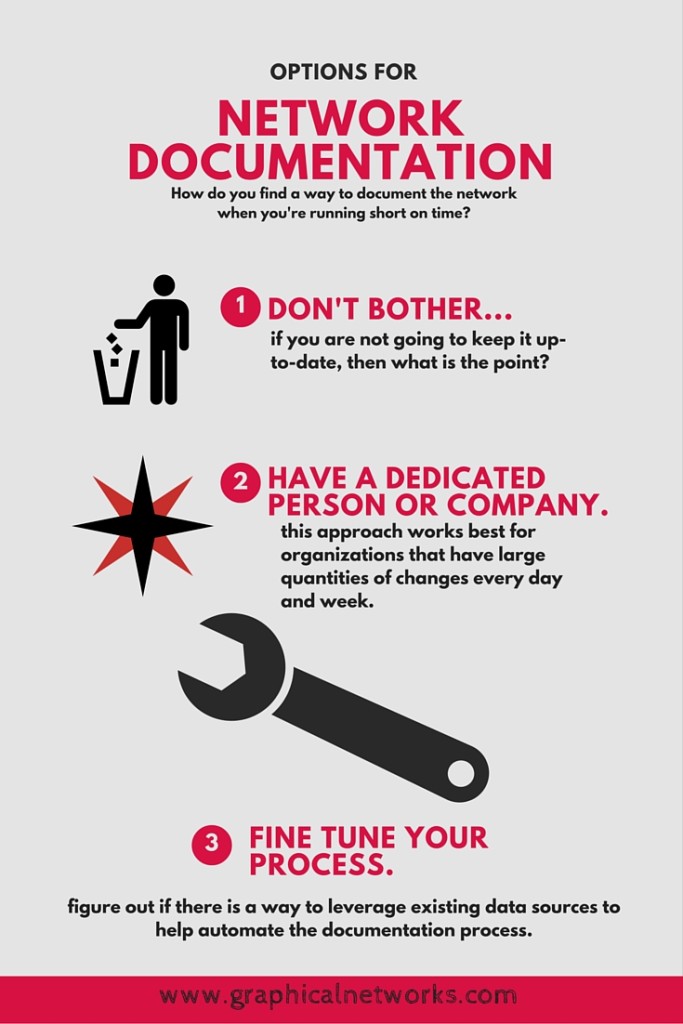
OK: so I waited and I got busy. I said tomorrow will be the day….then tomorrow came and went. Now, I have a bunch of updates to put into the system and changes and – oh – where did I leave that piece of paper on which I wrote everything down?
How do you keep your network documentation when there is no time for documenting? As I see it, there are two options:
A) Don’t bother because if you are not going to keep it up-to-date, then what is the point?
B) Get a better system or process.

Approach A is easy enough and doesn’t need any further explanation. But, what about approach B: getting a better process or system? Well, there are different approaches for this and in my experience, it doesn’t matter what the approach is as long as there is some mechanism in place to make the changes and updates happen. So, what could you do to make things work a little better and more efficient?
One option is having a dedicated person to make sure updates and changes get entered into the system. This could be a full-time or part-time person or a company that specializes in network documentation. Updates and changes are emailed or delivered via a change management system. Any changes and updates are sent via an email to the person in charge of the documentation so the updates can be made. This is a highly integrated process and one that typically is used by organizations that have very large quantities of changes that occur during the day and week.

What about most organizations that have more modest changes such as a change a day or one to two a week? To create a system for this, you need to look at the process you have for making changes in the system. For example, are you currently using a change management system to help schedule changes and updates to hardware? Or – are you are using email or a spreadsheet to track changes?
If you are using one of these approaches, take a look at the process and see how you can add in updating the network documentation as well. Maybe what will work for you is this: right after the new hardware is added or a cable is changed, the next immediate step is to make the change in the system. If it’s a web-based documentation system, then it should be as easy as add or change.
When looking at the process, figure out if there is a way to leverage existing data sources to help automate the documentation process. Maybe new hardware is monitored? Perhaps you can pull data automatically from your network monitoring system to help with the automation of you documentation?
Take time to look at your processes and try to make sure the documentation gets integrated into this process. By doing so, you can be sure your network documentation is always up-to-date.